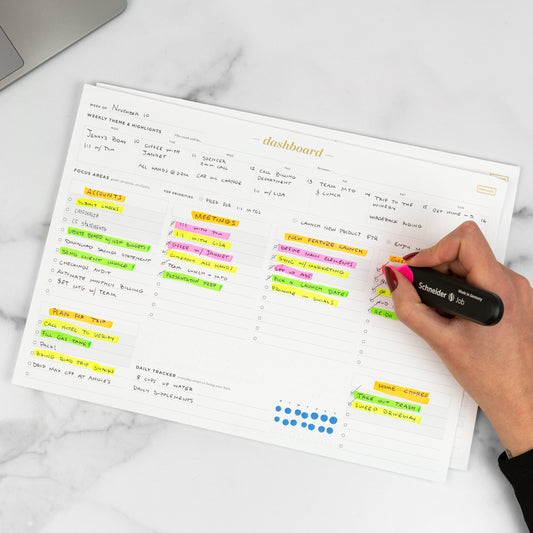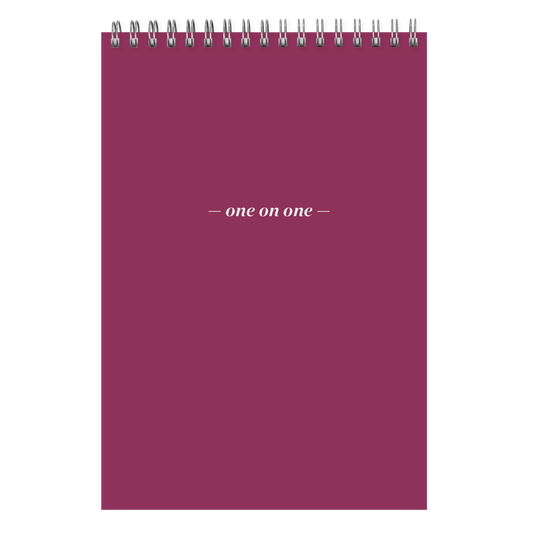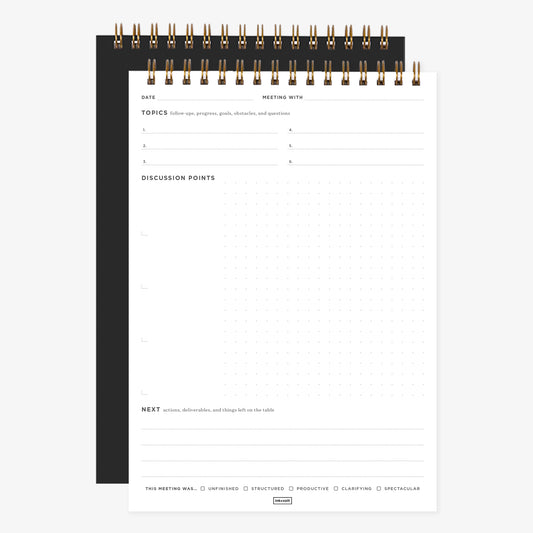The benefits of handwriting notes in notebooks are plenty.
Sure, typing up your notes is quick and we all have access to a laptop these days, but research shows that nothing beats a good pen and notebook when it comes to inspiring creativity and increasing focus.
That means a good notebook that boosts those qualities is important. Whether you’re taking notes in class, summarizing a meeting, journaling, or are constantly scribbling down new ideas, a good notebook is a must.
“Travel with it, eat with it, sleep with it,” said author Jack London of the trust writing tool. “Lead pencil markings endure longer than memory.”
Choosing just the right one can be overwhelming, though. Consider how you’re using your notebook, whether it’s staying at your desk or it goes everywhere with you, and how you work best. There are a lot of options and combinations to choose from that are perfect for the everyday.
Here are some of the basics to help kickstart your journey to finding your most useful notebook.
How notebook sizes and sizing work
You want a notebook that is sized to fit your goals.
Big notebooks work well for classes or in situations when there are a lot of details to record. Smaller notebooks are great for taking anywhere. Seriously, anywhere! Throw it in your bag or pocket and have it ready for anytime an idea hits you.
Notebook sizing is standardized into different codings, and can be a little difficult to understand if you’re unfamiliar.
A lot of popular notebooks are labeled in A or B formats. The sizing originated in Europe and eventually earned status through the International Organization of Standardization.
The sizes breakdown like this:
A4 = 8.27in X 11.69in
These are great for academics and people who like taking lots of notes. These pages are the biggest and have all the room you’ll ever need to take notes on everything. In terms of North American sizes, this will be the closest to a letter-sized piece of paper.
A5 = 5.83in X 8.27in
A6 = 4.13in X 5.83in
A5 and A6 notebooks are considered small-to-medium-sized notebooks. They work well for quick notes, making lists, and sketching. These notebooks also make for good travel companions, as they fit well in a lot of bags. A6 typically fit well in pockets; an example would be a Field Notes notebook.
A7 = 2.91in X 4.13in
These little guys are great for quick notes. If you constantly have ideas that you just need to jot down for later review, this is a perfect place to store them on-the-go!
B5 = 6.93in X 9.84in
B6 = 4.92in X 6.93in
You see these notebooks everywhere; they are among the most popular sizes of notebooks because they’re not too big and not too small. They’re just right!
Notebook pages
Pages come in a bevy of different colors, weights, and designs.
There are a few different sheet styles to choose from, and each come with their own benefits:
- Lined: These sheets are perfect for people who are using their notebooks for organized writing. College ruled lines measure 7mm and wide ruled lines are 8mm, which is a good option for people who like to write larger.
- Grid: Are you using your notebook for numbers or design sketches? Try pages that are gridded. They help keep everything even and don’t feel as restrictive as a lined page.
- Dot Grid: There is lots of versatility in a dotted grid. It’s perfect for bullet journaling, making lists, and brainstorming. The dots give just enough structure to be helpful but don’t take away any space for creativity.
- Blank: Everything is up to you in a blank notebook. You can draw, create lists, have brainstorming sessions…Every page is a chance to do something brand new.
The Ink+Volt Hardcover and Softcover notebooks can be ordered in either lined pages or dot grid pages. They also have a lot of versatility with a size approximate to A5 notebooks. Heavy, bright white paper pages make writing a breeze.
You might also need to consider whether you prefer standard pages, perforated pages, or the ability to refill a notebook (which can be environmentally friendly and helps you avoid buying brand new notebooks every time you fill one up).
You’ll also want to consider the paper weight, especially if you’re partial to a pen that has a heavier ink. Some notebooks are friendlier for fancier pens.
For example, ink from fountain pens tends to feather or bleed through some pages. Pen and page experts call the ability to see ink through the page “ghosting.” Ghosting = not ideal in any situation. Heavier pages will help you avoid that bleed and get more use out of your notebook.
If you’re using a pencil or ballpoint pen, a lesser quality paper is just fine, though still maybe not as enjoyable to write on as a really high quality, thick paper.
Notebook binding
Binding often gets overlooked when considering a notebook, but it’s really important. Do you like to work with an open notebook, so it looks like a reading book? Or do you like to fold the pages back so you’re only working with one page at a time?
If you’re a one-page type of notetaker, it might be best to use a spiral-bound notebook. You won’t have to worry about breaking the binding and the pages coming loose. Don’t worry about these being less flimsy. If you want a sturdy spiral-bound notebook, try one that has a hard cover to keep your pages protected and looking fresh.
Keep in mind that for left-handers, spiral-bound books can be quite uncomfortable to write on, as your wrist will tend to rest on the spiral while you write. A book that lays open flat is usually a better bet.
Glue-bound notebooks make it easy to remove pages from the notebook.This is great for sharing ideas and sketches. It’s not as great if you want everything to stay in the notebook, because the glue can break down and pages can separate and fall out over time.
Thread binding and staple binding are quite popular for their durability, though these notebooks may have fewer pages than a spiral or glue-bound notebook.
Staples or thread is placed in the middle of the pages, so these typically don’t lay flat, but they are a good happy medium between spirals and glue-bound notebooks. You can fold them back if you don’t mind that it will change the shape of the notebook.
The options for notebooks are endless, so while your search may take a while, there is sure to be a perfect notebook out there for you.
At the end of the day, you want to find one that has the qualities you find most important and will lend itself to your success. Think about what your top priorities are, and shop for a notebook that fits your life.
Need a place to start? Shop the Ink+Volt Hardcover Notebook, the Ink+Volt Softcover notebook, or our entire notebook store to find your next best notebook.









